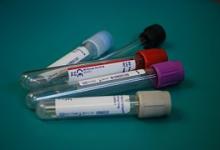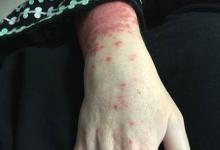ACR 2025 - Day 3 Report Save

Day 3 in Chicago is hump day, the last big full day of presentations and posters. The day began with an 8AM plenary session, which brings me to the first of my three notables from today:
Hydroxychloroquine Monitoring in SLE: (Abstract 1722) Dr. Shivani Garg addressed the safe monitoring of hydroxychloroquine (HCQ) levels to optimize lupus care. Interestingly the new guidelines on non-renal management of lupus fail to include suggestions on whether or not we should monitor HCQ levels. Yet it is well known that HCQ monitoring may be the best way of optimizing clinical outcomes and avoiding toxicity, especially in SLE patients. Dr Garg presented data pulled from the SLICC and other cohorts that included 1842 patients. Only 4.4% had toxicity (most being retinal). The main finding was that toxicity was 2 fold significantly higher when HCQ levels were >1150 ng/ml. Conversely when HCQ levels were < 750 there was a 40% increase rise of SLE activity and flare. Even if prescribing HCQ at < 5 mg/kg/day, there was a two-fold odds of active lupus and 52% had sub therapeutic levels (<750) and 18% had super therapeutic levels (>1150 ng/ml). Prescribing HCQ within the usual dosing limits you still may not achieve optimal levels, thereby justifying the use as HCQ monitoring.
Head-to-Head in PsA: (LB06) Behrens et al. presented the AGAIN study of secukinumab (SEC) vs. ustekinumab (UST) in 119 psoriatic arthritis patients who were previously treated with TNF inhibitors. The trial clearly favored the use of SEC over UST. At entry these patients had 14 tender joints in 7 swollen joints and were randomized to receive SEC or UST.. The ACR50 scores at week 28 were 48% for SEC and 24% for UST. Similarly the PASI90 scores were 48% versus 40%. These results suggest SEC is an effective opton for biologic experienced PsA patients who need further therapy.
The 2024 draft updates to the ACR juvenile idiopathic arthritis guidelines. This update to the ACR JIA guidelines was chaired by Richard Vehe and and Daniel Lavelle and addressed treatment of systemic JIA, as well as polyarticular, oligoarticular JIA, and Enthesitis, Dactylitis and New guidelines on dactylitis and deprescribing. Here are a few caveats from the recommendations for systemic JIA:
Systemic JIA (Stills disease): they strongly recommend that first line therapy be either an IL-1 or IL-6 inhibitor with no preference for either.
Patients should not be treated with NSAIDs as initial therapy or monotherapy
Conditionally recommend that oral corticosteroids also be avoided as initial therapy.
sJIA patients not responding to initial therapy, they recommend using the other biologic inhibitor or moving on to a JAK inhibitor
SJIA with macrophage activation syndrome (MAS) they strongly recommend systemic glucocorticoids and again they strongly recommend the use of a an inhibitor of IL-1 or IL-6. If necessary a different emmapalumab or a JAK inhibitor may be used. Other conditional recommendation include either cyclosporine, tacrolimus or other traditional agents.
SJIA patients should be evaluated for sJIA related lung disease (but did not offer how it should be evaluated)
Lastly they recommend deprescribing therapy when the state of clinically inactive disease is achieved. In the face of CID they recommend tapering and ultimately discontinuing the biologic DMARD.










If you are a health practitioner, you may Login/Register to comment.
Due to the nature of these comment forums, only health practitioners are allowed to comment at this time.